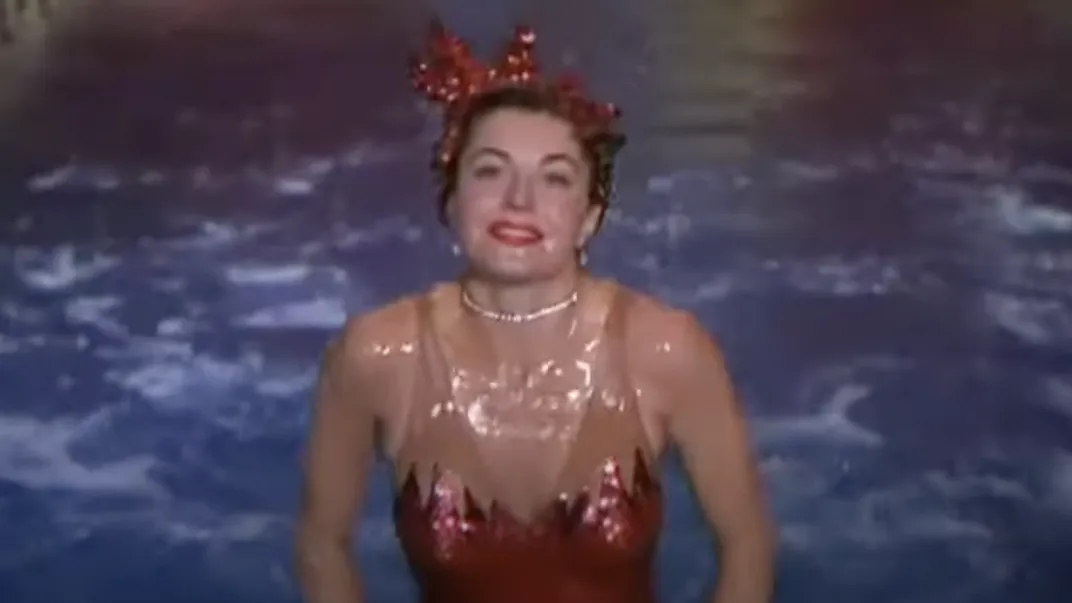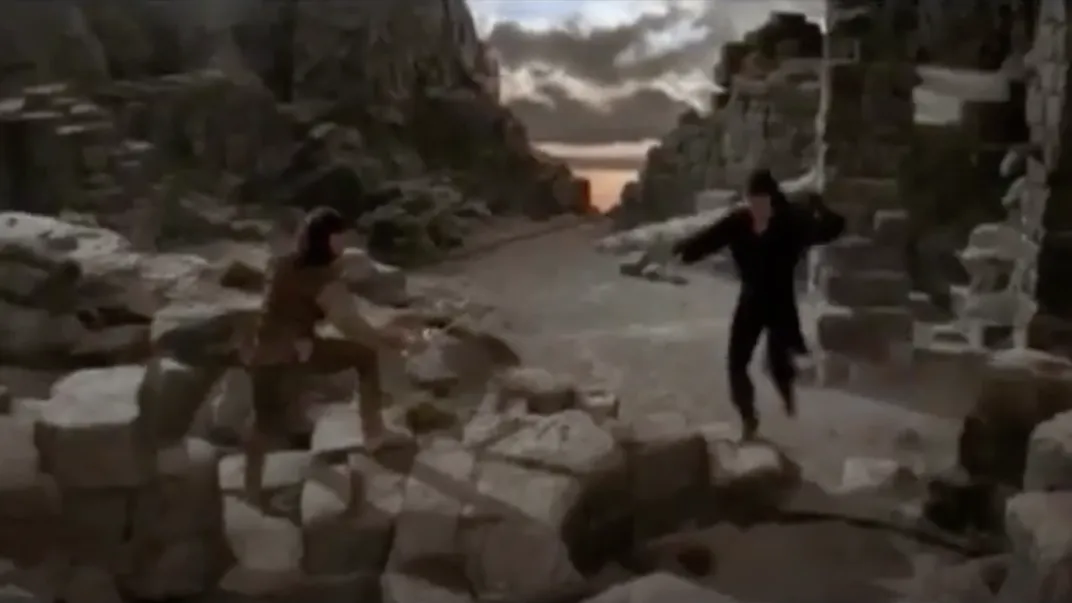Today, Michael Phelps, Usain Bolt and Simone Biles are household names, known as world-class Olympians who revolutionized swimming, track and field, and gymnastics, respectively. But some of their fellow athletes—from near-Olympic qualifiers to gold medalists—are famed less for their feats on the field than for their accomplishments in entirely different arenas. American pediatrician Dr. Benjamin Spock, for instance, won an Olympic gold medal in 1924. A century later, as Paris prepares to host the 2024 Summer Olympics, learn Spock’s story, as well as those of nine similarly surprising Olympians, would-be or otherwise.
Dr. Benjamin Spock, pediatrician and champion rower
/https://tf-cmsv2-smithsonianmag-media.s3.amazonaws.com/filer_public/7c/e5/7ce54860-6f5d-46b2-b369-bed0a00a1388/yales_eight_rowers_1924.jpg)
Two decades before The Common Sense Book of Baby and Child Care propelled the Connecticut-born pediatrician to international fame in 1946, the young Spock studied history and literature at Yale University. When Spock was a long-limbed, 6-foot-4 freshman, the rowing team’s captain spotted him and suggested he “go out for a man’s sport” instead of the high jump.
Spock eventually rowed all the way to the 1924 Olympics, where the eight-man Yale crew representing the United States earned gold for its 6-minute, 33-second finish—16 seconds faster than the second-place Canadians. Heading up the Americans was none other than James Stillman Rockefeller, a grandnephew of oil baron John D. Rockefeller. At the time of his death in 2004, 102-year-old Rockefeller was America’s oldest living Olympic gold medalist. Spock died in 1998, six years before his teammate, at the ripe old age of 94.
George S. Patton, Army general and modern pentathlete
/https://tf-cmsv2-smithsonianmag-media.s3.amazonaws.com/filer_public/c3/b0/c3b0f265-9f2d-4273-9375-f47ed09e0e9d/1912_fencing_patton_and_mas_latrie.jpg)
In the early 1900s, George S. Patton was a mediocre West Point student who struggled with everything from reading to math. But the future World War II general excelled at military drills and sports of all kinds, including track and field, fencing, sharpshooting, and polo.
A few years after his graduation from West Point, Patton was chosen to represent the U.S. at the 1912 Stockholm Games, where he competed in the first-ever modern pentathlon. The first event was shooting (Patton placed 21st), then swimming (7th), fencing (4th), cross-country riding (6th) and running (3rd). Ultimately, he finished fifth; though Patton didn’t score a medal that day, his future held many medals of a different type, for distinguished service during the war.
Johnny Weissmuller, Tarzan and champion swimmer
/https://tf-cmsv2-smithsonianmag-media.s3.amazonaws.com/filer_public/75/59/75592b58-b786-4946-b5d8-e276692d3e5a/johnny_weismuller_and_duke_kahanamoku_shaking_hands.jpg)
The actor behind Tarzan’s famous yell, Johnny Weissmuller embodied the beloved Edgar Rice Burroughs character in Tarzan the Ape Man (1932) and 11 subsequent films. The Adonis-like physique that won him the role stemmed from his pre-Hollywood days as a child swimmer who became a world-renowned Olympian. Born in Romania, then part of the Austro-Hungarian Empire, and raised in Chicago, Weissmuller took up swimming to aid his recovery from polio, and he quickly excelled at it.
He set his first world record at age 17 and became the first person to swim 100 meters in less than a minute at age 18. Weissmuller ultimately won five Olympic gold medals and set 67 world records before retiring to star as the King of the Jungle.
Esther Williams, actor and swimmer
Sometimes at Weissmuller’s side—the pair trained together and later performed alongside each other in swimming shows in San Francisco—was Esther Williams. The self-described “Million Dollar Mermaid” starred in a series of “aquamusicals,” a pool-centric film genre that was popular in the 1940s and 1950s.
Fans often assume that Williams was an Olympic champion. As the top American female swimmer and national champion in the late 1930s, she almost certainly would have been if not for the outbreak of World War II, which led to the cancellation of the 1940 Games. Disappointed, Williams reluctantly turned to Plan B: Hollywood superstardom.
Geena Davis, actor and archer
/https://tf-cmsv2-smithsonianmag-media.s3.amazonaws.com/filer_public/1d/5b/1d5bdcce-32e2-4aed-b75f-a64213c48b43/gettyimages-954506714.jpg)
While the trajectory usually goes the other way, Geena Davis was already an established, Oscar-winning actor when she took up archery on a whim in 1997, at age 41. After two years of near-daily training with a coach, the 6-foot-tall star of A League of Their Own emerged as a serious prospect for the 2000 Summer Olympics in Sydney. She finished 29th out of 300 women at the U.S. national archery championships, then moved on to the Olympic trial semifinals in New Jersey. The top 16 of 28 competitors continued to the next round; Davis finished 24th.
Anne, Princess Royal and champion equestrian
/https://tf-cmsv2-smithsonianmag-media.s3.amazonaws.com/filer_public/ba/d2/bad25178-132a-4575-b14c-405420ae0cae/gettyimages-2150109351.jpg)
Anne, Princess Royal, competed on her mother’s horse, Goodwill, at the three-day Olympic equestrian event in Montreal in 1976. The British royal family was there to cheer her on. Riding since early childhood and competing since age 11, Elizabeth II’s only daughter placed 24th at the Games. Anne’s first husband, Mark Phillips, and her daughter, Zara Tindall, also participated in the Olympic event, albeit in different years; only the youngest of the three equestrians won a medal, with Tindall earning a team silver at the 2012 London Games.
Felipe VI, Spanish king and yachtsman
/https://tf-cmsv2-smithsonianmag-media.s3.amazonaws.com/filer_public/ec/3d/ec3d5a61-a45e-4cab-afb4-95737a177276/gettyimages-583089926.jpg)
As king of Spain for the past decade, Felipe VI is both the head of state and the commander of the Spanish Armed Forces. Before he took on this responsibility, the then-24-year-old prince performed double duty at the 1992 Summer Olympics in Barcelona, serving as Spain’s official flagbearer at the opening ceremony, as well as a member of the yachting team (now called sailing), which placed sixth.
Other non-British royals who have competed in the Olympics include Albert II, Prince of Monaco (bobsledding); Albert’s wife, Princess Charlene (swimming); Prince Bira of Siam, now Thailand (sailing); and Princess Haya bint al-Hussein of Jordan (equestrian riding).
Vera Wang, dress designer and figure skater
Even after world-renowned fashion designer Vera Wang launched her bridal dress empire in 1990, she pursued a surprising side gig by creating sequin-heavy, appliqué-a-plenty figure skating costumes for the likes of Nancy Kerrigan, Michelle Kwan and Evan Lysacek. The role was bittersweet for Wang, who was once a competitive skater herself. She competed at the 1968 U.S. national championships but failed to qualify for that year’s Olympic team—an achievement that would have made her the very first Asian American Olympic figure skater. (Instead, that title went to Tiffany Chin in 1984.) Her skating career over, Wang packed up and moved to Paris to study art history.
Bob Anderson, Hollywood choreographer and champion fencer
You might not know his name, but you definitely know his moves: Bob Anderson was the man behind the sword fights in some of the biggest films of the 20th century, including the original Star Wars trilogy, The Princess Bride, The Mask of Zorro and The Lord of the Rings: The Return of the King. Anderson even served as Darth Vader’s stunt double during lightsaber duels in The Empire Strikes Back and Return of the Jedi. “It was always supposed to be a secret, but I finally told George [Lucas] I didn’t think it was fair anymore,” actor Mark Hamill told Starlog magazine in 1983. “Bob worked so bloody hard that he deserves some recognition. It’s ridiculous to preserve the myth that it’s all done by one man.”
Anderson honed his fighting skills as a competitive fencer, representing Great Britain at the 1952 Helsinki Games, where his team tied for fifth place. Later that decade, Anderson was appointed coach of Britain’s national fencing team. He also served as president of the British Academy of Fencing, which marked his death in 2012 with a statement attributing “nearly 100 percent of fencing in Britain today, [either] directly or indirectly, … to the work of this man.”
Harold Sakata, actor, professional wrestler and Olympic weightlifter
Last but not least is Harold Sakata, an athlete-turned-actor who is most memorable for his role as the tuxedoed, bowler hat-wearing henchman Oddjob in the 1964 James Bond film Goldfinger. He was well suited for the role: Told to judo chop Bond’s neck realistically, the Hawaiian-born actor put star Sean Connery out of commission for three days.
Sakata got his start as a 113-pound, 5-foot-8 18-year-old who was insecure about his slim stature. Weightlifting helped him pack on the pounds, and in 1948, he qualified for the U.S. Olympic team. At the London Games that summer, Sakata won a silver medal in the light-heavyweight weightlifting event, posting a total of 380 kilograms, or 838 pounds.
Sakata retired from the sport in 1949, taking up wrestling instead—a decision that led directly to his acting career. Bond producers saw the wrestler competing in a televised match and called him in for a screen test. As a Hawaiian newspaper reported in 1964, “He won the role of Oddjob easily, demonstrating his strength by kicking off the mantel of [producer Harry] Saltzman’s fireplace with his bare foot.”
Lead illustration credit: Esther Williams: Wikimedia Commons under public domain, Benjamin Spock: Wikimedia Commons under public domain, Darth Vader: Wikimedia Commons under public domain, George S. Patton: Wikimedia Commons under public domain, Johnny Weismuller: Wikimedia Commons under public domain, Felipe IV: Quirinale.it via Wikimedia Commons, Geena Davis: Alan Light via Wikimedia Commons under CC BY 2.0, Vera Wang: Christopher Peterson via Wikimedia Commons under CC BY 2.0, Anne, Princess Royal: Alexander Timofeevich Bormotov via Wikimedia Commons under CC BY-SA 4.0, Harold Sakata: Fair use via Wikimedia Commons
:focal(700x527:701x528)/https://tf-cmsv2-smithsonianmag-media.s3.amazonaws.com/filer_public/7a/46/7a4647f9-93e6-4980-a892-e952b37c57ff/surprising-olympians.jpg)
/https://tf-cmsv2-smithsonianmag-media.s3.amazonaws.com/accounts/headshot/rosemary.png)





/https://tf-cmsv2-smithsonianmag-media.s3.amazonaws.com/accounts/headshot/rosemary.png)